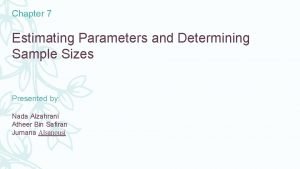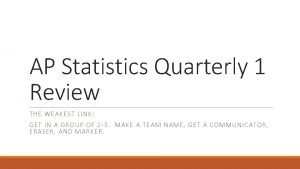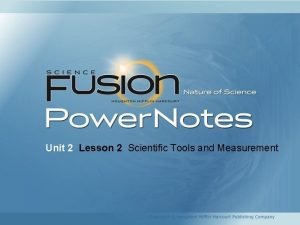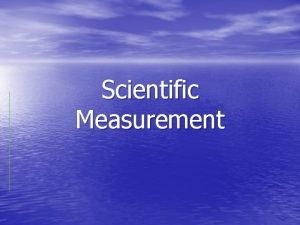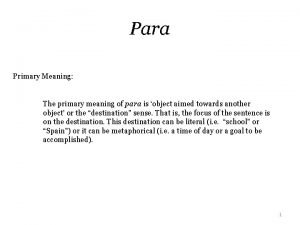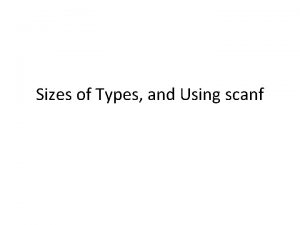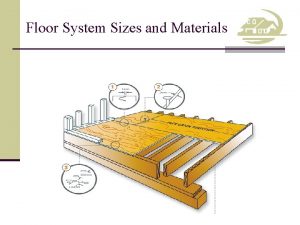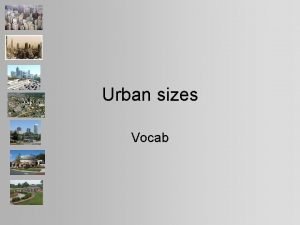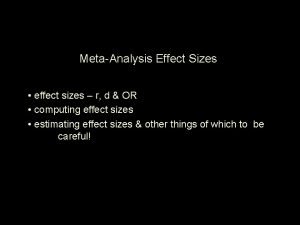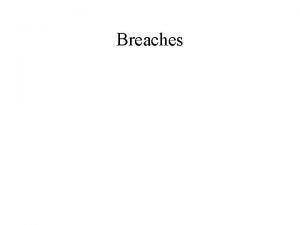Early Scientific Measurements Aimed at determining sizes and








- Slides: 8

Early Scientific Measurements • • Aimed at determining sizes and relative positions of dominant celestial bodies (Earth/Moon/Sun) Performed by Greek Geographers and Mathematicians in 365 -240 BC Effectively illustrate power of mathematics in science Instructions to complete handout: Ø On each of the 5 measurement pages: q Label and complete the diagram q Illustrate how the diagram and the observations can be used to arrive at an estimate of the indicated quantity Ø On the last page q Determine the accuracy of these early measurements by comparing them to their currently accepted values Aristarchus of Samos

Diameter of Earth P L INITIAL Shadow Length S 1 OBSERVATIONS: ----------- = -----; Pillar Height P 8. 0 Scenario: At local noon on an equinox light rays from the sun do cast a shadow for an upright pillar that is not located at the equator, but on the equator no shadow is cast. S Arclength = L = 950, 000 meters

Diameter of Moon Scenario: During a solar eclipse, the shadow of the moon tapers to a point on the surface of the earth. However, during a lunar eclipse, the shadow of the earth tapers to 2. 5 moon diameters. NEW Solar Eclipse – Moon shadow tapers to a point on Earth OBSERVATIONS: Lunar Eclipse – Earth shadow tapers to width of 2. 5 Moon Diameters

Distance Between Earth and Moon Scenario: When the moon is full, a small coin can be located an appropriate distance from our eye to perfectly block out the moon. Coin Diameter Dia Coin 1 NEW OBSERVATION: ------------- = ----Earth-Coin Distance L Earth-Coin 110

Distance Between Earth and Sun Scenario: When the phase of the moon is a perfect “quarter” the Earth-Moon. Sun angle will be 90 degrees, resulting in the three celestial bodies lying at the vertices of a right triangle. NEW OBSERVATIONS: SEM Angle = 87 Degrees EMS Angle = 90 Degrees

Diameter of the Sun Scenario: When the light from the sun passes through a pin hole in a piece of paper and shines on the ground, a set of similar triangles is created. Sun Image Diameter Dia Sun Image 1 NEW OBSERVATION: --------------- = ----Earth-Paper Distance L Earth-Paper 110

Accuracy of These Measurements • The currently accepted values for the 5 quantities measured by these early scientists are as follows (to two significant digits): Dia. Earth Dia. Moon Dia. Sun = 13, 000 Km = 3, 600 Km = 1, 400, 000 Km LEarth-Moon = 390, 000 Km LEarth-Sun = 150, 000 Km • Absolute and Relative Error are often used to quantify the level of agreement between estimates and accepted values:

• Illustrate the level of agreement between the currently accepted values and estimates of early scientists by completing the following table (remember: 1 Km = 1000 m) Measurement Accepted Value (Km) Dia. Earth 13, 000 Dia. Moon 3, 600 LEarth-Moon 390, 000 LEarth-Sun 150, 000 Dia. Sun 1, 400, 000 Estimated Value (Km) Relative Error (%)
 Estimating parameters and determining sample sizes
Estimating parameters and determining sample sizes Men's shirt sizes are determined by their neck sizes
Men's shirt sizes are determined by their neck sizes Measurements and scientific tools lesson 2
Measurements and scientific tools lesson 2 Measurements and their uncertainty answer key
Measurements and their uncertainty answer key What is johannes volkelt empathy theory
What is johannes volkelt empathy theory Naturalistic observation def
Naturalistic observation def Interaction aimed at defeating an opponent
Interaction aimed at defeating an opponent Primarymeaning
Primarymeaning Systematic inquiry aimed at the discovery of new knowledge
Systematic inquiry aimed at the discovery of new knowledge
